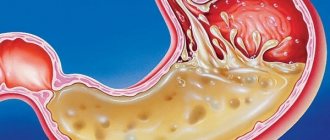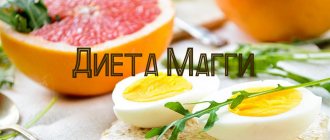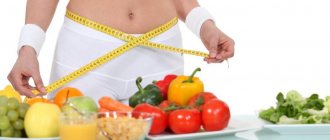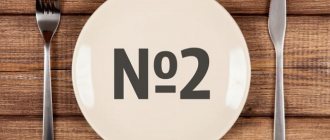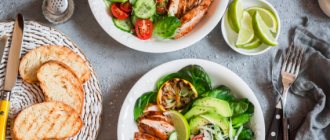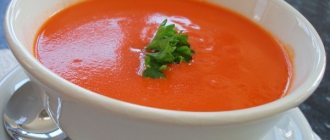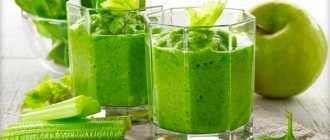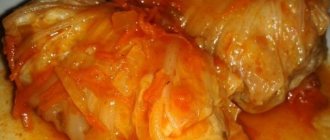General rules
Pancreatitis is an inflammatory disease of the pancreas.
The causes of its damage are varied: obstruction (blockage) of the pancreatic duct, toxic poisoning, exposure to drugs, vascular disorders, infectious and parasitic diseases, trauma. There are acute and chronic pancreatitis. Acute pancreatitis is based on enzymatic damage to the pancreas. Often occurs when taking medications ( methyldopa , azathioprine , 5-aminosalicylates , tetracyclines , furosemide , cimetidine , metronidazole ). In half of the cases, the cause is cholelithiasis, and 25% are associated with alcohol abuse.
Symptoms and treatment of the disease depend on the degree of damage to the gland and intoxication. Mild degree ( serous edema ) is characterized by moderate pain, single vomiting, nausea and, in general, satisfactory condition of the patient.
The average degree of intoxication (fine-focal necrosis of the gland) is characterized by persistent pain in the epigastrium, repeated vomiting, pallor of the skin, and a rise in temperature.
Severe degree (widespread necrosis of the gland) is manifested by painful vomiting, severe pain and severe general condition. Jaundice and symptoms of peritonitis often appear .
Treatment solves the following problems:
- combating shock and toxemia ;
- elimination of pain and spasm;
- suppression of the activity of glandular enzymes (hunger, proton pump inhibitors, aspiration of gastric contents).
Patients with severe forms require infusion therapy and continuous feeding with tubes (enteral nutrition mixtures).
Chronic pancreatitis is a long-term, progressive disease and each episode of exacerbation causes the replacement of pancreatic tissue with fibrous tissue. As a result, exocrine and endocrine failure of the organ develops. Signs of exocrine insufficiency are steatorrhea and manifestations of malnutrition (weight deficiency, calcium metabolism disorders).
Therapeutic nutrition (Diet 5P according to Pevzner) plays an important role at all stages of the disease and helps reduce stasis in the ducts, suppress hyperenzymemia , and reduce excitability of the gallbladder. For symptoms of pancreatitis, treatment with Diet No. 5P has a positive effect not only in the acute period. In a chronic course, it helps to improve metabolic processes in the pancreas, restore its function and the patient’s impaired nutrition, and helps prevent relapses and progression of the disease.
Allowed foods in the first week of the diet for pancreatitis
Basic Diet 5 for pancreatitis is slightly modified and called Diet 5P . In acute and exacerbation of chronic disease, it has a number of features, and the leading principles of diet therapy for pancreatitis are:
- hunger during the period of pronounced clinical manifestations and autolytic processes in the pancreas (only parenteral nutrition is provided);
- the transition to nutritious nutrition is carried out as soon as possible (since the patient needs nutritious protein);
- gradual expansion of the diet by including new foods and dishes;
- when expanding the diet, a gradual increase in the volume and calorie content of food is carried out;
- compliance with maximum mechanical and chemical sparing of the pancreas.
Diet Table number 5 for pancreatitis is determined by the patient’s condition and depends on its severity, and therefore has 2 options.
The first option is indicated for acute pancreatitis and a sharp exacerbation of chronic pancreatitis. The nutrition of this table creates maximum rest for the pancreas and helps eliminate pain. This most gentle diet is prescribed after fasting days from the third day of the disease, but since it does not correspond to physiological nutritional standards and human needs, it is prescribed for 3-7 days. It is characterized by a low-calorie diet containing proteins - 60-70 g, fats - 50 g and carbohydrates - 200-250 g.
Vegetables allowed for pancreatitis
Frequent meals (up to 8 times) and small portions (from 100 to 300 g) are recommended. All products are boiled and have a semi-liquid consistency, and by day 5-6 the patient is allowed to eat semi-viscous food.
Since liquid and carbohydrate foods are the least stimulants of pancreatic and gastric secretion, after hunger they start eating with carbohydrates:
- slimy soups based on various cereals (millet and corn cereals are excluded) or vegetable broths;
- mashed liquid porridge with water;
- weak tea with sugar;
- jellies, jellies and mousses made from fruit juice with xylitol;
- vegetable purees without oil (potato, carrot, pumpkin, squash) and steamed vegetable puddings;
- pureed dried fruit compotes;
- white, yesterday's bread, dry biscuits and crackers.
1-2 days after carbohydrate foods, it is allowed to introduce protein foods:
- cream soup made from boiled meat;
- 1-2 eggs in the form of a steam omelet, soft-boiled and in the form of a protein omelet;
- soufflé, steam cutlets, dumplings from beef, chicken, fish, turkey (before cooking, meat is freed from fat, tendons, fish and chicken from skin);
- curd paste and soufflé, steam curd puddings made from unleavened cottage cheese (preferably calcined);
- butter - in ready-made dishes; vegetable oil is not yet included in the diet.
After acute symptoms are relieved and pain is reduced, as the digestive function of the gastrointestinal tract improves, the diet is gradually expanded and the 5P Diet according to Pevzner is prescribed, the second option, which is also indicated for mild exacerbation of chronic pancreatitis. It is recommended for a long time (up to a year) and is designed to prevent exacerbations in the future. It also preserves the principles of thermal, mechanical and chemical sparing, which reduces nutritional stimulation of the diseased organ. All dishes are boiled or steamed, first consumed in pureed form, and a little later - chopped.
Main characteristics
- The protein content has been increased compared to the first option, as well as the amount of fat and simple carbohydrates. However, the total amount of fat is no more than 80 g, and they are introduced gradually from the third to keep the patient on this diet option.
- If the digestion of protein foods worsens, it is possible to temporarily reduce the amount of protein and increase carbohydrates.
- Dishes are predominantly boiled and steamed, not only in pureed, but also chopped form; the transition from pureed to chopped dishes is also carried out gradually.
- The amount of salt is limited (6-8 g).
- Extractive substances and coarse fiber are excluded. To further reduce extractive substances, cook the meat in small pieces (100 g each), draining the first water after 10 minutes of cooking. The meat is used as a semi-finished product for chopped dishes, puddings, and soufflés.
- Hot and excessively cold foods are not allowed.
- Fractional meals (5-6 times a day) in small portions.
- Large meals are prohibited.
Depending on the severity of the phenomena and concomitant diseases of the gastrointestinal tract, food can be used in pureed or unmashed form. If the course of the disease is favorable, the pureed version is prescribed on average for up to 2 months, and then the degree of grinding of the products is reduced and the volume of food is gradually increased. If their health worsens, they return to the first version of the table with reduced energy value. During an exacerbation, rest for the digestive organs also ensures a sharp limitation of foods with juice and choleretic effects: fresh fruits and vegetables, juices, vegetable oil, sugar, jam, honey and egg yolks.
Fruits and berries allowed for pancreatitis
In the presence of constipation, the basic pancreatic diet changes - the amount of vegetables and fruits increases, the content of carbohydrates decreases (mainly easily digestible to avoid fermentation and bloating).
The tendency of chronic pancreatitis to progress, the presence of periodic pain and dyspeptic syndrome entails the need for constant adherence to a diet. Stopping alcohol consumption is of great importance.
Diet 5p according to Pevzner in remission
The second type of diet 5p was developed for patients with pancreatitis in the stage of fading exacerbation (usually this phase begins on the 5-7th day of the disease), as well as for cases when the disease has gone into remission (within 2-4 months after the removal of acute symptoms).
70% of those suffering from pancreatitis are alcoholics.
This diet is moderate in calories, high in protein and vitamins, and also excludes the consumption of fatty, cholesterol-rich foods, as well as foods that cause fermentation in the intestines and flatulence. Prohibited foods include thermally unprocessed fruits and vegetables, fresh milk and baked goods, refractory fats, and essential oils.
At this stage of treatment, the absorption of liquid and grated food is allowed. You should also adhere to fractional meals.
Authorized Products
The 5P diet for pancreatitis includes:
- Potatoes, pumpkin, carrots, zucchini, green peas, cauliflower and beets can be eaten boiled or grated. After a while, if well tolerated, it is allowed to eat raw grated carrots and pumpkin, tomatoes and cucumbers.
- Cereals are preferable to buckwheat, rice, semolina, oatmeal and oat flakes. Porridges are boiled in water and ground, resulting in a semi-viscous consistency. You can make semolina and rice souffle, as well as porridge from buckwheat and rice flour, which speeds up the cooking process.
- Typically, pearl barley, millet, corn and barley cereals are less tolerated by patients, and they are limited in their diet.
- Soups prepared only in vegetable broths with pureed vegetables. You can prepare puree soups and cream soups, milk soups (milk is diluted with water). You can put cereals in soups (semolina, rice, rolled oats, but they are good to boil or puree). It is allowed to chop vegetables (potatoes, carrots, pumpkin, zucchini) very finely, but they cannot be fried to season soups.
- Soups are seasoned with sour cream, milk, cream, butter or simply dried flour.
- Lean beef, veal, rabbit, chicken. The meat of young animals and birds (veal, chickens) is consumed sparingly due to its high purine content. Meat is recommended boiled and steamed and only chopped products (cutlets, soufflé, meatballs, meatballs, quenelles). Boiled chicken and tender rabbit meat and beef can be eaten in pieces. Puree and soufflé are prepared from boiled poultry pulp, previously crushed.
- Low-fat fish, steamed and boiled, in the form of cutlets and pieces. The ideal choice would be cod, pike perch, hake, carp, pollock, perch, pike, blue whiting. They cook fish whole carcasses or portioned pieces. Poached fish (cooked in a saucepan with a small amount of water) is not allowed, since it contains more extractive substances than boiled fish.
- Wheat bread (grades I and II) is only allowed if it is stale, in order to prevent intestinal bloating.
- The diet is expanded with the introduction of savory cookies.
- Low-fat dairy products: kefir, acidophilus, yogurt. Milk is poorly tolerated, so it is allowed to be added to dishes (omelettes, cereals, sauces, soups). You can eat half-fat cottage cheese in its natural form and as part of casseroles, soufflés, and puddings. Sour cream is used only as a seasoning for dishes. It is allowed to eat mild cheese, but in grated form. For calcium deficiency, calcined cottage cheese is indicated.
- Omelettes are predominantly protein; soft-boiled eggs are allowed (1 piece per day).
- You can use sauces based on vegetable broth and mucous broth of cereals with the addition of sour cream and milk. The flour is not fried when preparing them.
- Ripe sweet baked apples. You can make boiled fruits and berries, jellies, jelly and mousses. Dried fruits are used pureed. The fruits are used to make jellies and mousses using xylitol. You can eat marshmallows and jelly marmalade. Raw fruits and pureed berries are allowed.
- After an exacerbation, fats are gradually introduced into the diet, first - butter in porridge and purees (15-20 g per day), and then - refined sunflower oil (5-15 g).
- Drinks: weak tea with lemon, sweet fruit juices diluted with water, rosehip infusion, compotes of fresh and dry fruits (pears, apples, apricots), still table water. You can add xylitol to tea. Dried fruit compotes and carrot juice are useful for patients with potassium deficiency.
Table of permitted products
| Proteins, g | Fats, g | Carbohydrates, g | Calories, kcal | |
Vegetables and greens | ||||
| zucchini | 0,6 | 0,3 | 4,6 | 24 |
| broccoli | 3,0 | 0,4 | 5,2 | 28 |
| cauliflower | 2,5 | 0,3 | 5,4 | 30 |
| potato | 2,0 | 0,4 | 18,1 | 80 |
| carrot | 1,3 | 0,1 | 6,9 | 32 |
| cucumbers | 0,8 | 0,1 | 2,8 | 15 |
| tomatoes | 0,6 | 0,2 | 4,2 | 20 |
| pumpkin | 1,3 | 0,3 | 7,7 | 28 |
Fruits | ||||
| apples | 0,4 | 0,4 | 9,8 | 47 |
Nuts and dried fruits | ||||
| dried apricots | 5,2 | 0,3 | 51,0 | 215 |
| dried apricots | 5,0 | 0,4 | 50,6 | 213 |
| prunes | 2,3 | 0,7 | 57,5 | 231 |
Cereals and porridges | ||||
| buckwheat (kernel) | 12,6 | 3,3 | 62,1 | 313 |
| semolina | 10,3 | 1,0 | 73,3 | 328 |
| oat groats | 12,3 | 6,1 | 59,5 | 342 |
| rice | 6,7 | 0,7 | 78,9 | 344 |
Bakery products | ||||
| wheat bread | 8,1 | 1,0 | 48,8 | 242 |
Confectionery | ||||
| jam | 0,3 | 0,2 | 63,0 | 263 |
| jelly | 2,7 | 0,0 | 17,9 | 79 |
| marshmallows | 0,8 | 0,0 | 78,5 | 304 |
| fruit and berry marmalade | 0,4 | 0,0 | 76,6 | 293 |
| paste | 0,5 | 0,0 | 80,8 | 310 |
| Maria cookies | 8,7 | 8,8 | 70,9 | 400 |
Raw materials and seasonings | ||||
| honey | 0,8 | 0,0 | 81,5 | 329 |
| sugar | 0,0 | 0,0 | 99,7 | 398 |
Dairy | ||||
| kefir 1.5% | 3,3 | 1,5 | 3,6 | 41 |
| curdled milk 1% | 3,0 | 1,0 | 4,1 | 40 |
| acidophilus 1% | 3,0 | 1,0 | 4,0 | 40 |
Cheeses and cottage cheese | ||||
| cottage cheese 1% | 16,3 | 1,0 | 1,3 | 79 |
| cottage cheese 1.8% (low-fat) | 18,0 | 1,8 | 3,3 | 101 |
Meat products | ||||
| beef | 18,9 | 19,4 | 0,0 | 187 |
| rabbit | 21,0 | 8,0 | 0,0 | 156 |
Bird | ||||
| boiled chicken breast | 29,8 | 1,8 | 0,5 | 137 |
| boiled turkey fillet | 25,0 | 1,0 | — | 130 |
Eggs | ||||
| chicken eggs | 12,7 | 10,9 | 0,7 | 157 |
Fish and seafood | ||||
| flounder | 16,5 | 1,8 | 0,0 | 83 |
| pollock | 15,9 | 0,9 | 0,0 | 72 |
| blue whiting | 16,1 | 0,9 | — | 72 |
| cod | 17,7 | 0,7 | — | 78 |
| hake | 16,6 | 2,2 | 0,0 | 86 |
| pike | 18,4 | 0,8 | — | 82 |
Oils and fats | ||||
| butter | 0,5 | 82,5 | 0,8 | 748 |
| sunflower oil | 0,0 | 99,9 | 0,0 | 899 |
Non-alcoholic drinks | ||||
| water | 0,0 | 0,0 | 0,0 | — |
| mineral water | 0,0 | 0,0 | 0,0 | — |
Juices and compotes | ||||
| apricot juice | 0,9 | 0,1 | 9,0 | 38 |
| carrot juice | 1,1 | 0,1 | 6,4 | 28 |
| peach juice | 0,9 | 0,1 | 9,5 | 40 |
| pumpkin juice | 0,0 | 0,0 | 9,0 | 38 |
| rose hip juice | 0,1 | 0,0 | 17,6 | 70 |
| * data is per 100 g of product | ||||
Indications, basic rules, daily calorie content
Diet number 5 was developed by nutritionist and therapist M.I. Pevzner. as part of other types of therapeutic diets for pathologies of other organs (there are 15 in total).
Following the dietary recommendations of the table is indicated for several major diseases of the digestive system (for example, gastritis, in which you need to follow a special diet), which include:
- Chronic hepatitis is an inflammatory disease of the liver of various etiologies (hepatotropic viruses, toxins, alcohol). In the case of an acute process (the duration of the inflammatory reaction is up to six months), this diet is used during the period of convalescence (clinical and laboratory recovery with normalization of the main indicators of liver function).
- Cirrhosis is the gradual death of hepatocytes (liver cells) with their replacement by fibrous (connective) tissue, while the liver does not perform its functions. For this disease, it is recommended to follow a special diet.
- Cholecystitis is an inflammation of the gallbladder, in which diet 5 is indicated during the period of remission (decrease in the severity of inflammation) and during a chronic, long-term course, with a slight intensity of symptoms and dysfunction.
- Gallstone disease (calculous cholecystitis) is a metabolic pathology with a chronic course, characterized by the formation of stones in the gallbladder and its ducts.
For these diseases, diet table 5 is used in the absence of concomitant intestinal pathology (enteritis, duodenitis, enterocolitis).
The basic rules for using this diet are simple and include:
1. Frequent eating in small portions - usually you need to eat 4-5 times a day.
2. Avoid foods that increase acid formation in the stomach - coffee, alcohol, canned food, marinades, fatty foods, spicy dishes.
3. With regard to cooking, preference is given to boiling or steaming it (stewing, cooking casseroles are allowed), and it is advisable to grind the food.
4. The diet should be dominated by food with a sufficient amount of protein, a decrease in the amount of fat (especially animal fat) and easily digestible carbohydrates.
5. Daily calorie content should be about 2400-2800 kcal. In this case, the volumetric part of the protein is about 80 g (half of it should be of plant origin), fats are also about 80 g (a third of them are of plant origin), carbohydrates - up to 400 g.
Remember! The daily fluid intake should be at least 1.5 liters, salt is limited to 10 g.
Thanks to this, the fifth table, with mandatory compliance with the recommendations and daily caloric intake for each day, allows you to provide the body with all nutrients and vitamins, while limiting the load on the liver, hepatobiliary system, and pancreas. Also, diet table number 5, the menu of which contains a variety of dishes, does not limit the variety of tastes, which allows it to be used without psychological harm to a person.
Fully or partially limited products
- Rye and fresh wheat bread, cakes, pastries with cream, puff pastry, baked goods, yeast pies.
- Soups with meat, mushroom, and fish broths, borscht and cabbage soup, cold soups (okroshka, beetroot soup).
- All fried foods, fried pies, cheesecakes, pancakes and pancakes.
- Fatty meat and fish (sturgeon, salmon, halibut), goose and duck meat, smoked meats, caviar, salted fish, sausages, canned food, fried and stewed fish. Organ meats (liver, kidneys, brains), as they contain a lot of cholesterol .
- Crumbly porridges (limit or completely exclude pearl barley, millet, corn, barley).
- Vegetables with coarse fiber (radish, turnip, rutabaga, white cabbage, eggplant), legumes, mushrooms in any form. The exception is soybeans.
- Raw vegetables and fruits are introduced very carefully. At the initial stage of the diet, they are recommended only in boiled or baked form.
- Cooking fats and lard (pork, beef and lamb) are excluded.
- Fruits containing large amounts of simple carbohydrates (bananas, grapes, dates), which can cause bloating.
- Milk soups.
- You should not eat hard-boiled or fried eggs, full-fat milk, cream, fatty sour cottage cheese, or salty, spicy cheese.
- Hot seasonings and spices: horseradish, herbs, mustard, pepper, ketchup, mayonnaise.
- Black coffee, chocolate, ice cream, cocoa, grape juice, alcoholic and carbonated drinks are also excluded.
Vegetables prohibited for pancreatitis
Table of prohibited products
| Proteins, g | Fats, g | Carbohydrates, g | Calories, kcal | |
Vegetables and greens | ||||
| canned vegetables | 1,5 | 0,2 | 5,5 | 30 |
| eggplant | 1,2 | 0,1 | 4,5 | 24 |
| swede | 1,2 | 0,1 | 7,7 | 37 |
| peas | 6,0 | 0,0 | 9,0 | 60 |
| cabbage | 1,8 | 0,1 | 4,7 | 27 |
| bulb onions | 1,4 | 0,0 | 10,4 | 41 |
| chickpeas | 19,0 | 6,0 | 61,0 | 364 |
| salad pepper | 1,3 | 0,0 | 5,3 | 27 |
| parsley | 3,7 | 0,4 | 7,6 | 47 |
| radish | 1,2 | 0,1 | 3,4 | 19 |
| white radish | 1,4 | 0,0 | 4,1 | 21 |
| dill | 2,5 | 0,5 | 6,3 | 38 |
| beans | 7,8 | 0,5 | 21,5 | 123 |
| horseradish | 3,2 | 0,4 | 10,5 | 56 |
| spinach | 2,9 | 0,3 | 2,0 | 22 |
| sorrel | 1,5 | 0,3 | 2,9 | 19 |
Fruits | ||||
| bananas | 1,5 | 0,2 | 21,8 | 95 |
Berries | ||||
| grape | 0,6 | 0,2 | 16,8 | 65 |
Mushrooms | ||||
| mushrooms | 3,5 | 2,0 | 2,5 | 30 |
| marinated mushrooms | 2,2 | 0,4 | 0,0 | 20 |
Nuts and dried fruits | ||||
| nuts | 15,0 | 40,0 | 20,0 | 500 |
| raisin | 2,9 | 0,6 | 66,0 | 264 |
| seeds | 22,6 | 49,4 | 4,1 | 567 |
| dates | 2,5 | 0,5 | 69,2 | 274 |
Cereals and porridges | ||||
| corn grits | 8,3 | 1,2 | 75,0 | 337 |
| millet cereal | 11,5 | 3,3 | 69,3 | 348 |
| barley grits | 10,4 | 1,3 | 66,3 | 324 |
Flour and pasta | ||||
| pasta | 10,4 | 1,1 | 69,7 | 337 |
| dumplings | 11,9 | 12,4 | 29,0 | 275 |
Bakery products | ||||
| buns | 7,9 | 9,4 | 55,5 | 339 |
| Rye bread | 6,6 | 1,2 | 34,2 | 165 |
Confectionery | ||||
| pastry cream | 0,2 | 26,0 | 16,5 | 300 |
| shortbread dough | 6,5 | 21,6 | 49,9 | 403 |
Ice cream | ||||
| ice cream | 3,7 | 6,9 | 22,1 | 189 |
Chocolate | ||||
| chocolate | 5,4 | 35,3 | 56,5 | 544 |
Raw materials and seasonings | ||||
| mustard | 5,7 | 6,4 | 22,0 | 162 |
| mayonnaise | 2,4 | 67,0 | 3,9 | 627 |
Dairy | ||||
| milk 4.5% | 3,1 | 4,5 | 4,7 | 72 |
| cream 35% (fat) | 2,5 | 35,0 | 3,0 | 337 |
| whipped cream | 3,2 | 22,2 | 12,5 | 257 |
| sour cream 30% | 2,4 | 30,0 | 3,1 | 294 |
Cheeses and cottage cheese | ||||
| parmesan cheese | 33,0 | 28,0 | 0,0 | 392 |
Meat products | ||||
| fatty pork | 11,4 | 49,3 | 0,0 | 489 |
| salo | 2,4 | 89,0 | 0,0 | 797 |
| bacon | 23,0 | 45,0 | 0,0 | 500 |
Sausages | ||||
| smoked sausage | 9,9 | 63,2 | 0,3 | 608 |
Bird | ||||
| smoked chicken | 27,5 | 8,2 | 0,0 | 184 |
| duck | 16,5 | 61,2 | 0,0 | 346 |
| smoked duck | 19,0 | 28,4 | 0,0 | 337 |
| goose | 16,1 | 33,3 | 0,0 | 364 |
Fish and seafood | ||||
| smoked fish | 26,8 | 9,9 | 0,0 | 196 |
| black caviar | 28,0 | 9,7 | 0,0 | 203 |
| salmon caviar granular | 32,0 | 15,0 | 0,0 | 263 |
| salmon | 19,8 | 6,3 | 0,0 | 142 |
| canned fish | 17,5 | 2,0 | 0,0 | 88 |
| salmon | 21,6 | 6,0 | — | 140 |
| trout | 19,2 | 2,1 | — | 97 |
Oils and fats | ||||
| animal fat | 0,0 | 99,7 | 0,0 | 897 |
| cooking fat | 0,0 | 99,7 | 0,0 | 897 |
Alcoholic drinks | ||||
| dry red wine | 0,2 | 0,0 | 0,3 | 68 |
| vodka | 0,0 | 0,0 | 0,1 | 235 |
| beer | 0,3 | 0,0 | 4,6 | 42 |
Non-alcoholic drinks | ||||
| soda water | 0,0 | 0,0 | 0,0 | — |
| cola | 0,0 | 0,0 | 10,4 | 42 |
| instant coffee dry | 15,0 | 3,5 | 0,0 | 94 |
| sprite | 0,1 | 0,0 | 7,0 | 29 |
Juices and compotes | ||||
| grape juice | 0,3 | 0,0 | 14,0 | 54 |
| * data is per 100 g of product | ||||
What to exclude?
- Butter pastries, puff pastry products, freshly baked bread, cakes, fried flour dishes .
- Broths based on meat, mushrooms, fish, soups based on them.
- Smoked meats.
- Lard, margarine, cooking fats.
- Full-fat milk, sour cream, fermented baked milk, cream, soft cheeses.
- Green onions, radishes, spinach, radish, sorrel.
- Fatty varieties of poultry and meat (fatty beef, duck, goose, lamb, pork), offal, brains.
- Fatty fish (catfish, stellate sturgeon, sturgeon, beluga), canned fish, smoked and salted fish.
- Hard-boiled eggs, egg yolk .
- Pickled vegetables, vegetable caviar, canned food.
- Seasonings, hot sauces (black pepper, mustard, horseradish).
- Sour berries and fruits (citrus fruits, cranberries).
- Products with creams, chocolate, ice cream.
- Pure black coffee ( only with milk ), cocoa, strong tea, cold drinks.
- Alcoholic and alcohol-containing drinks.
Menu for the week (diet mode)
As mentioned above, the diet involves a gradual expansion of the diet. At the initial stage of diet therapy, dishes in the diet are present in pureed form and vegetables only in boiled form. During this period, wheat bread is allowed - 200 g per day and sugar - 20 g.
When switching to an extended version of the diet, the main dishes remain, but the consumption of raw vegetables in the form of salads is allowed. The amount of bread increases (you can use 100 g of rye and 200 g of wheat), sugar up to 40 g and butter up to 20 g-30 g per day. Below are menu options for pancreatitis of wiped and non-wiped table.
Monday
| Breakfast |
|
| Lunch |
|
| Dinner |
|
| Afternoon snack |
|
| Dinner |
|
| For the night |
|
Tuesday
| Breakfast |
|
| Lunch |
|
| Dinner |
|
| Afternoon snack |
|
| Dinner |
|
| For the night |
|
Wednesday
| Breakfast |
|
| Lunch |
|
| Dinner |
|
| Afternoon snack |
|
| Dinner |
|
| For the night |
|
Thursday
| Breakfast |
|
| Lunch |
|
| Dinner |
|
| Afternoon snack |
|
| Dinner |
|
| For the night |
|
Friday
| Breakfast |
|
| Lunch |
|
| Dinner |
|
| Afternoon snack |
|
| Dinner |
|
| For the night |
|
Saturday
| Breakfast |
|
| Lunch |
|
| Dinner |
|
| Afternoon snack |
|
| Dinner |
|
| For the night |
|
Sunday
| Breakfast |
|
| Lunch |
|
| Dinner |
|
| Afternoon snack |
|
| Dinner |
|
| For the night |
|
This menu can be used for children.
Sample diet menu number 5
Currently, it is believed that the patient should make his own diet. The doctor gives only general instructions about permitted and prohibited foods, cooking methods and food intake. The patient must choose dishes based on his own food preferences and the availability of necessary products.
For pancreatitis, it is better to eat vegetable soups
Let's look at a sample menu for every day for children and adults.
Menu for children
All dishes given to children should be tasty and tender so that the baby does not refuse them. Children are very demanding about the taste of food and do not understand the importance of eating right. Therefore, it is recommended that each serving contains something tasty, for example:
- breakfast consisting of pureed milk oatmeal with the addition of banana or raisins. Or an omelette without yolks with a steamed fish quenelle. As a drink - tea;
- second breakfast - cottage cheese casserole or sandwich with toasted bread;
- lunch – vegetarian soup and chicken meatballs with vegetable side dish;
- afternoon snack – dry cookies or low-fat yoghurt with tea;
- dinner - vegetable meatballs or vegetable stew with boiled fish.
Before bedtime, you can give your child 100 ml of low-fat kefir. During treatment, it is important to remember that you cannot break the diet, as this can lead to an exacerbation of the pathology. If a child asks for sweets, it is better to give him compote or yogurt made from berries; at this time it is better to completely refuse sweets and other sweets.
Plant foods for pancreatitis are the best choice
Menu for adults
In principle, the menu for a week of the 5p diet for pancreatitis for adults does not differ from that for children. The main difference is that there is no need to worry about the patient refusing to eat. Therefore, the diet may be less varied. Example of diet number five for adults:
- for breakfast - any porridge or steamed omelet. You can add a little butter or cheese. As a drink - weak tea;
- second breakfast - vegetables or fruits, for example, a sweet apple or carrot soufflé with tea;
- for lunch - vegetarian soup, boiled dietary meat with a vegetable side dish. Kissel or compote as a drink;
- afternoon snack - the same as in the children's menu;
- dinner - potato or zucchini puree with stewed fish, steamed cutlets. Drink – compote or tea. Before going to bed, the patient should be given a glass of low-fat kefir.
At the request of the patient, some dishes can be replaced with others. The main thing is that they are not made from prohibited products. This diet should be followed for several weeks until stable remission is achieved. After this, you can add other dishes and products to your diet.
Treatment of pancreatitis requires great responsibility from the patient. Only if all the doctor’s requirements are met can the function of the affected organ be restored. The 5p diet for pancreatitis helps to significantly increase the effectiveness of drug therapy for the disease and reduce the risk of relapse.
Recipes for table dishes Diets No. 5p for every day
The 5P table, especially the extended version of the diet, contains a variety of dishes, so it is not difficult to create a diet for the week. Stews made from chopped vegetables and tender pieces of meat are allowed. You can even make beef stroganoff from pre-boiled meat, and all steamed minced meat and vegetable dishes can be served with milk or sour cream sauce. Milk sauces are prepared in different consistencies: thick and added to minced poultry when preparing cutlets and quenelles, and semi-liquid - to cereal, vegetable and meat dishes. They are prepared with milk diluted with water.
Since recipes can vary slightly (different vegetables in soups or different meat additives), it is not necessary to have a large supply of them. The dish will look different, their taste and nutritional value will also be different. Here are recipes for the most common dishes.
First meal
Milk soup with meat puree
Boiled beef is passed through a meat grinder several times or beaten in a blender and pureed. Mashed rice and slimy broth are added to the meat puree, salted, boiled, allowed to cool slightly and seasoned with lezon (a mixture of beaten egg and milk, which gives the soup a delicate taste). When serving, add butter.
Zucchini and carrot soup
Prepared from a mixture of carrots, potatoes and zucchini.
Carrot-zucchini soup-puree
Potatoes and carrots are boiled, zucchini is cut and simmered until tender. Then all the hot vegetables are rubbed with a decoction, diluted to the required consistency with a decoction of vegetables or milk. Stirring, bring the soup to a boil and add salt.
Second courses
Chicken dumplings with cottage cheese
Pass the chicken meat through a meat grinder several times, add the grated cottage cheese. Mix well, add beaten egg, butter, salt. The cut dumplings are steamed. Can be served with milk or sour cream sauce.
Beef roll with omelette
Add eggs to the ground beef, add salt and mix well. The minced meat is laid out 2 cm thick on a wet towel, and a steamed omelette (egg and milk) is placed on top.
Beef roll with omelette
Using a towel, roll up the minced meat, giving it the shape of a roll, and transfer it to the grill of a steamer, make several punctures and cook for 25 minutes.
Semolina pudding with apples
Cook viscous semolina porridge and add peeled grated apples, egg yolk and sugar. Mix the mixture well and add the whipped whites. Pour the mixture into molds and steam for 30 minutes. Serve with fruit jelly. The finished pudding should retain its shape well, be fluffy and porous, and retain the taste of apples.
Simple recipes for diet 5
An example of preparing some dishes of diet 5:
Vegetarian borscht:
- Chop the peeled beets and sour apples on a coarse grater, add a small amount of water and simmer for 15-20 minutes with butter or vegetable oil in a sealed container.
- Then add chopped carrots, potatoes, onions, tomatoes and parsley root.
- Simmer for another 10 minutes, then add shredded cabbage, add water and cook for another 8-10 minutes, season with sour cream.
Vegetarian rassolnik:
- Pour boiling water over the sorted and washed pearl barley and leave to swell for 3-4 hours or overnight.
- Then boil it in water or vegetable broth until softened.
- Add chopped potatoes.
- After 15-20 minutes, add carrots and onions sautéed in butter.
- Peel the pickled cucumber and remove seeds, chop finely and simmer in a small amount of water for 20 minutes.
- Combine with the rest of the contents, let it boil and season with sour cream.
Reviews and results
Nutritional therapy loses its meaning if it is not strictly followed and if the patient is not convinced of the need for it. This dietary table is complete in protein content and can be followed by patients for a long time. Reviews note rapid relief: pain and bloating are eliminated, stools are normalized. Many note that they are forced to constantly adhere to dietary nutrition due to their health status, since expanding the diet causes deterioration. The reviews also indicate certain difficulties: individual cooking requires knowledge of the technology of its preparation and time.
- “... I was admitted to the hospital with acute pancreatitis. They found gallstones and said that they were the cause of pancreatitis. The condition was not very serious, but I still spent 3 weeks in the hospital (surgery and then gastroenterology). Therefore, I know the diet very well - I went through all its options. After discharge, I continue to do it, they said 6 months and described approximately what products and how to introduce them when expanding the diet. I do everything very strictly, because I am afraid of exacerbation. I don’t want to have surgery - I’d rather eat right. I feel good: there is no pain or bitterness, my stomach is not swollen, and food is digested well. Of course, it’s difficult to do it - I’m tired of steamed, ground and almost tasteless food, which is not familiar to a healthy person. But with my illnesses, I have nowhere to go”;
- “... With chronic pancreatitis, I strictly monitor my nutrition and follow the basic diet constantly (almost all foods can and do not need to be ground, but this is good). But even from the approved products, I don’t tolerate everything well. For example, pearl barley and millet porridge are difficult for me - immediately bloating and pain in the intestines (probably also colitis). After so many years, I have already adapted to preparing the necessary dishes. At first a simple double boiler helped, but now I bought a multicooker - it helps a lot and you can cook much more dishes in it. I teach the whole family to eat properly”;
- “... I have chronic cholecystitis and pancreatitis. Diet number 5 is the main one for me and I studied it very well. Once a year I am treated in a hospital (usually an exacerbation in the spring), and the rest of the time I only eat diet food and take enzymes periodically. Only this allows you to feel good (without pain and heaviness under the ribs). Over the course of her long history of illness, she adapted to quickly making steamed dishes and soufflés. Of course, I don’t have the opportunity to cook every day, so I make cutlets and quenelles for 2-3 days, and then steam them. When there is no exacerbation, nutrition is complete and healthy (without fried, spicy and fatty foods). My family supports me."
What is the 5p diet
This nutritional system is aimed at reducing the production of pancreatic enzymes and improving metabolism in the gastrointestinal tract.
It is used in therapy:
- acute and chronic pancreatitis;
- cholecystitis;
- gallstone disease.
Table No. 5p is also useful for fatty liver hepatosis.
For the first few days, the patient is prescribed fasting. Subsequently, the entire period of following the diet is divided into 2 parts, during which foods are gradually included in the patient’s diet so as not to provoke a sharp increase in load and relapse. Coarse fiber and extractive substances are excluded.
The first part imposes strict restrictions, and the second (softer) involves the introduction of additional dishes into the diet.
The 5p diet is aimed at reducing the load on the digestive organs.

